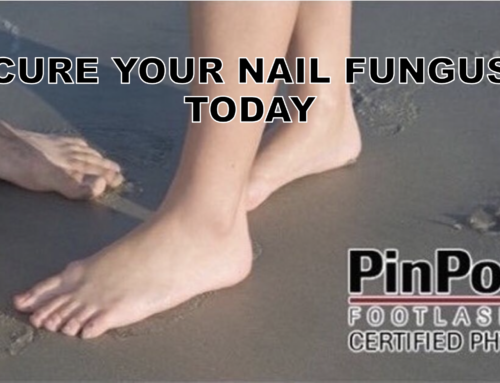Toenail fungus, also known as onychomycosis, is a stubborn and frustrating condition that affects millions of people worldwide. While not usually life-threatening, it can cause thickened, discolored, brittle nails that are embarrassing and sometimes painful. Because the fungus lives deep beneath the nail, treatments are often aggressive—and with aggression comes potential risk.
Not every treatment for nail fungus is dangerous, but some carry serious side effects that patients often don’t hear about until after they begin treatment. Understanding the risks vs. rewards of different treatment options is key to protecting your health. This guide will walk you through the most common treatments, highlighting their dangers so you can make a safe and informed decision.
The Riskiest Treatment: Oral Antifungal Medications
Oral antifungal drugs, such as terbinafine (Lamisil) and itraconazole (Sporanox), are often the first line of defense prescribed by doctors. These medications work by entering your bloodstream and attacking the fungus from the inside out.
Effectiveness: Cure rates hover around 60%, which makes them more effective than topical creams and over-the-counter remedies. For patients with severe or widespread infections, this sounds appealing.
The problem? With that effectiveness comes danger. Because the drug is metabolized through your liver, it can place a heavy burden on your system.
Potential Side Effects
-
Mild reactions: Headaches, nausea, diarrhea, stomach pain, rash, or indigestion.
-
Moderate risks: Skin reactions, allergic responses, dizziness, or changes in taste.
-
Severe risks: Liver failure, jaundice, irregular heartbeat, and—in rare cases—death.
Patients taking these drugs are often required to undergo regular blood tests to monitor liver function. This can mean monthly checkups, lab visits, and added costs. For individuals with pre-existing liver conditions, heavy alcohol use, or other chronic illnesses, the dangers are even higher.
Question to ask yourself: Is it worth risking long-term organ damage to treat a nail condition that, while unsightly, is rarely dangerous on its own?

Why Doctors Still Prescribe Them
You may wonder why a physician would ever recommend such risky treatment. The answer lies in tradition and efficacy. For decades, oral antifungals were the only consistently effective solution for nail fungus. Many patients still prefer a “quick fix,” and some doctors continue to rely on the treatments they know best.
However, patients today have safer alternatives that don’t require gambling with their liver health.
Topical Treatments: Lower Risk, Lower Success
Another common treatment option is topical antifungal medication—creams, gels, or medicated nail lacquers applied directly to the nail.
Pros:
-
Safer than oral medications (minimal systemic absorption).
-
There are a few side effects, usually limited to mild skin irritation.
-
Available over the counter or by prescription.
Cons:
-
Cure rates are low, often less than 20–30%.
-
Treatment can take many months to years.
-
Fungi under the nail plate are difficult to reach with surface medication.
Topical treatments might be suitable for very mild infections or patients who cannot risk oral drugs, but most people find them frustrating due to the long commitment and limited results.
Natural Remedies and Home Treatments
Many people turn to home remedies like tea tree oil, vinegar soaks, or essential oil blends. While these may provide temporary relief or slow the spread of fungus, scientific evidence for their effectiveness is very limited.
Dangers of DIY treatments:
-
Delayed proper treatment can allow the fungus to spread deeper.
-
Some essential oils may cause skin irritation or allergic reactions.
-
Self-diagnosis may miss underlying conditions like psoriasis or bacterial infections.
Natural options can be part of a supportive routine, but they rarely deliver full clearance.
Risk-Free Modern Alternative: Laser Treatment
In recent years, laser technology has revolutionized nail fungus care. Treatments like the PinPointe FootLaser deliver concentrated light energy through the nail, targeting and destroying fungus at the root without damaging surrounding tissue.
Benefits of Laser Treatment
-
Safe and non-invasive: No drugs, no chemicals, no systemic risks.
-
No side effects: You don’t need to worry about liver damage, rashes, or blood monitoring.
-
Quick recovery: The procedure is painless, takes less than an hour, and you can return to normal activities immediately.
-
High success rates: Clinical studies show laser treatments often outperform topical options and rival oral medications—without the danger.
For patients who want effective treatment without compromising their health, laser therapy represents the best balance of results and safety.
Key Takeaways
-
Oral antifungals: Effective but risky, with potential for severe side effects including liver failure.
-
Topicals: Low risk but also low effectiveness, often requiring very long treatment times.
-
Natural/home remedies: Minimal evidence, may delay real results, and sometimes irritating.
-
Laser therapy: Safe, effective, and free from systemic dangers—an excellent modern choice.
Final Thoughts
Toenail fungus can be frustrating, but your health should always come first. Before agreeing to any treatment, make sure you fully understand the risks. Oral antifungal medications may work for some, but they aren’t worth endangering your liver and overall well-being.
Instead, explore safer and more effective alternatives like laser treatment. Not only does it avoid the dangerous side effects of medications, but it also allows you to get back on your feet—literally—without downtime.
If you’re ready to take the next step, we invite you to schedule a free consultation with a licensed nail doctor near you. Call us at (800) 672-0625 or visit our website for more details.
Your health and confidence matter. Don’t settle for a risky solution when safer, proven options are available.




